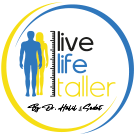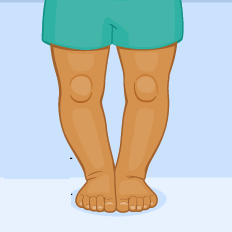Bow legs, also known as bowed legs, refer to a condition where the knees remain wide apart when the feet are together. This misalignment can affect balance, movement, and even joint health. While some people are naturally bow legged, others develop this condition due to nutritional deficiencies, genetics, or underlying bone disorders.Both bow legged women and bow legged men may experience difficulties in everyday activities such as walking, running, and even standing for long periods. Over time, bow legs can also contribute to discomfort, joint pain, and increased stress on the lower limbs. But how exactly does being bow legged impact daily movements and sports performance? Let’s explore.
Table of Contents
ToggleHow Does Bow Leg Affect Daily Movements?
Walking and Running Difficulties
One of the most common challenges faced by bow legged individuals is difficulty in walking and running. Because the knees do not align properly, the weight distribution across the legs is uneven. This can lead to:
- Altered gait patterns – Many bow legged men and bow legged women develop a distinct walking style, which may cause discomfort over time.
- Reduced stability – The misalignment affects balance, making it harder to walk on uneven surfaces.
- Increased risk of injuries – Uneven pressure on the knees and ankles can result in strains or joint pain, particularly during long walks or runs.
Regular movement assessments and physiotherapy can help improve mobility and reduce strain on the joints.
Problems in Climbing and Descending Stairs
Climbing and descending stairs require strong leg muscles and proper weight distribution. However, for individuals with bow legs, this can be challenging due to:
- Uneven pressure on the knees, leading to discomfort and fatigue.
- Increased stress on the hip joints, which can cause stiffness.
- Difficulty in maintaining balance, particularly when carrying heavy objects.
Using supportive footwear and strengthening exercises can significantly enhance stability while navigating stairs.
How Does Bow Leg Affect Sports and Activities?
Which Sports Are Suitable for Bowleg?
Although bow legged men and bow legged women may experience challenges in some sports, there are still many activities they can enjoy. Low-impact sports that minimize stress on the knees include:
- Swimming – Provides a full-body workout without putting excessive strain on the joints.
- Cycling – Strengthens leg muscles while keeping the knees in a stable position.
- Yoga and Pilates – Improves flexibility, posture, and balance.
- Rowing – Builds endurance while maintaining proper knee alignment.
Choosing the right sports can help individuals with bowed legs stay active while avoiding unnecessary discomfort.
Exercises to Avoid
Some high-impact exercises can worsen symptoms in individuals with bow legs. Activities that place excessive pressure on the knees should be avoided, such as:
- Running on hard surfaces – Increases joint stress and may cause pain.
- Squats with heavy weights – Puts added strain on the knee joints.
- Jumping exercises – Activities like jumping rope or plyometrics can exacerbate discomfort.
Instead, focusing on low-impact workouts and physiotherapy exercises can help maintain joint health.
Measures That Can Be Taken for Bow Legs in Daily Life
Orthopedic Footwear and Supportive Equipment
Wearing orthopedic footwear is one of the most effective ways to reduce strain on the knees and ankles. Specially designed shoes can:
- Improve balance and alignment, making walking and standing more comfortable.
- Reduce pressure on the inner knee, which is often affected by bow legs.
- Provide arch support, ensuring proper weight distribution.
Additionally, using knee braces or insoles can help individuals with bowed legs move more comfortably.
Importance of Physiotherapy and Exercises
Physiotherapy plays a crucial role in managing bow legs and preventing long-term complications. Some of the key benefits include:
- Strengthening the muscles around the knees, improving overall leg stability.
- Enhancing flexibility, making movement smoother and more efficient.
- Reducing joint pain, especially in individuals who experience discomfort due to misalignment.
Regular physiotherapy sessions and customized exercise plans can help both bow legged women and bow legged men improve their posture and mobility.Additionally, individuals experiencing x-legs (a condition where the knees touch but the ankles remain apart) may benefit from similar treatment approaches. You can learn more about x-legs and its management by visiting Live Life Taller.
Does Bow Leg Cause Pain and Discomfort in Daily Life?
While some individuals with bow legs experience no pain, others may develop discomfort over time. Factors such as body weight, activity level, and the severity of the condition can all influence symptoms
How Does Bow Leg Influence Long-Term Joint Health?
If left untreated, bow legs can contribute to long-term joint problems, including:
- Osteoarthritis – Uneven pressure on the knees can lead to cartilage wear over time.
- Hip and lower back pain – Misalignment can cause additional stress on the hips and spine.
- Reduced mobility – As discomfort increases, some individuals may struggle with daily activities.
Early intervention, including physiotherapy, supportive footwear, and lifestyle modifications, can help minimize the long-term impact of bow legs on joint health.For those considering corrective treatment, understanding options like x-legs correction procedures may also be beneficial. To explore treatment possibilities, visit Live Life Taller.


